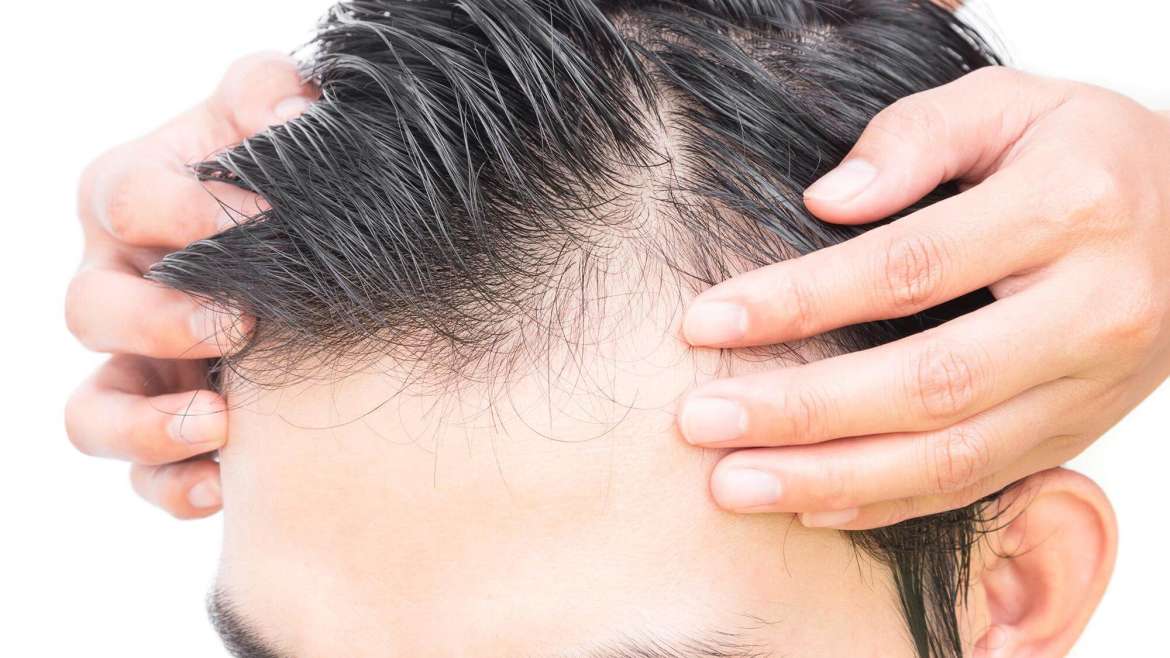The term Scarring Alopecia is used to describe a set of heterogeneous diseases which have as a common feature the destruction of the hair follicle and its replacement with scar tissue.
The damage that is caused results in permanent hair loss.
Scarring forms of hair loss account for about 7% of alopecia patients overall and can occur in otherwise healthy men and women of all ages.
On an individual basis, the incidence rate for each of the conditions that fall under the category of alopecia areata is extremely small.
In most cases hair loss takes the form of small spots that expand over time and which differ from the counterparts of alopecia areata by the roughness they show at the ends.
In some cases they are asymptomatic and develop gradually, while in others they develop rapidly and are accompanied by a burning sensation, itching or pain.
Affected areas may experience redness, scaling, reduced or increased pigmentation, pustules and fistulas.
Recent studies seem to trace the causes of alopecia areata to irreversible damage to the epithelial stem follicle cells (eHFSC), which are located at the site of “the bulge” of the hair follicle.
However, depending on the nature of the cause that causes this type of alopecia, we can distinguish between primary and secondary.
In the first case, the cause is endogenous, with the hair follicles being destroyed through some inflammatory process.
In the second case, the destruction of the hair follicle comes from an external factor such as a trauma, burn or neoplasia.
Primary scarring alopecia occurs in 3.2% of people with alopecia.
In relation to the type of cells that destroy hair follicles, they are divided into:
A. Lymphocytic
B. Neutrophils
C. Mixed
- The clinical picture presented by the patient may give some clues in relation to the diagnosis of scarring alopecia. However, in order for the doctor to have a complete picture and to determine the specific form of the disease, one or more biopsies are performed during which the destruction of hair follicles, the existence of scar tissue deep in the skin, as well as the possible presence and location of inflammation in relation to with hair follicles.
Given that treating alopecia areata is difficult once it has set in, its treatment is aimed at slowing down or stopping the inflammatory process before it sets in. Considering the fact that this type of alopecia can lead to extensive damage or permanent hair loss, the treatments used are quite aggressive. Their choice depends on the diagnosis and include corticosteroids, antibiotics, antimalarials and isotretinoin drugs.
In some cases and if the hair loss has stopped for some years there is the possibility of surgical treatment.
The two most common causes of alopecia areata are follicular lichen and discoid lupus erythematosus.
It is the most common cause of scarring alopecia. It appears in middle-aged people (40-60 years old) and is more common in women than in men. It rarely occurs in childhood. In a percentage of 17-50% it is found in combination with more common forms of lichen planus.
The etiology is unknown but it is considered an autoimmune disorder.
Clinically it appears in the form of exfoliative plaques with erythema and hyperkeratosis. In some cases there are no symptoms while sometimes hair loss may be accompanied by itching or discomfort.
Treatment aims to slow hair loss and reduce symptoms and is mainly with corticosteroids administered either orally or topically.
It is the second most common cause of alopecia areata. It is an autoimmune disease of unknown cause, the onset of which is mainly found between the ages of 20 and 40, and occurs more often in women. 5% of cases develop into Systemic Lupus Erythematosus.
Clinically, it presents as discoid erythematous plaques with the presence of follicular plugs and hypochromia or hyperpigmentation, atrophy and vasculature.
Treatment includes sun protection along with hydroxychloroquine, topical and systemic steroids, minoxidil, and immunosuppressive drugs.



